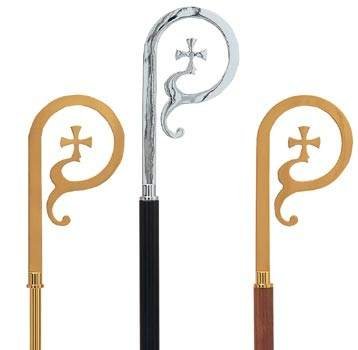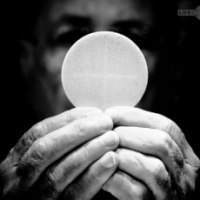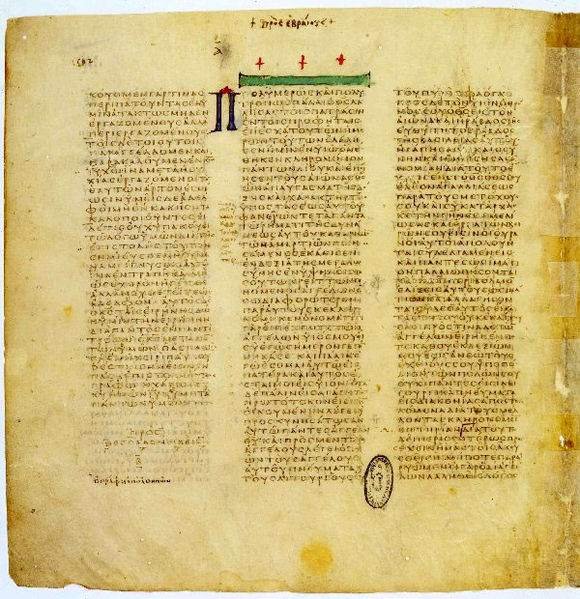Today is the feast day of St. Ignatius of Antioch, Bishop and Martyr. St. Ignatius was born in Syria ca. 50, and is believed to have been a disciple of the Apostle St. John. He became the third Bishop of Antioch, following St. Peter and St. Evodius, in ca. 69. In about 108, on the authority of the emperor Trajan, St. Ignatius was arrested and condemned to die for his faith before a Roman audience.
It is at this point that he becomes for us one of the greatest μάρτυρες (martyrs) of the Early Church. A martyr in Greek literally is a witness, one who gives testimony — and in his death, St. Ignatius not only bore great testimony for his faith in Christ, but he bears great testimony to us in this day of the faith, beliefs, and practices of the Early Church. For on his way to Rome, he wrote seven letters to the Churches of Asia Minor, exhorting them to remain firm in their faith, and to the Church at Rome, admonishing the believers there not to intervene and prevent him from giving his ultimate witness.
A.D. 108 — this is scarcely two generations from the time of Christ’s earthly ministry, at the very closing of the Apostolic Age: the Apostle John is believed to have died as late as ca. 100. Ignatius of Antioch lived early enough to have known several of the Apostles and heard their teachings. He was held in high esteem by the entire Church, a well-known, respected, and authoritative bishop and teacher. He was notorious enough even outside the Church for Trajan to have made an example of him. So we have every reason to trust Ignatius’s testimony regarding the faith of the Christian Church of his day — the faith received from the Apostles.
What Ignatius can teach us
The Authority of the Bishop
There has been considerable debate among historians about the development of the episcopacy and at what point in the growth of the Church the office of bishop came to mean what it means to the Church today. Bishops (or overseers — the Greek is ἐπίσκοποι* [episkopoi]) are described in the New Testament (Philippians 1:1, 1 Timothy 3:1-7, Titus 1:7), but it appears that in the earliest days of the Church, the offices of bishop and presbyter (πρεσβύτερος [presbyteros], or elder — the presbyters of the Church became what we call priests) may have been to some extent synonymous. (For example, in 1 Peter 5:1, St. Peter refers to himself as a fellow presbyter†; in the above passage in 1 Timothy 3, St. Paul describes the offices of bishop and deacon but not presbyter.) The governance of the local church by only one monarchical bishop, as came to be the model and continues to be the model, is known to historians as the monoepiscopacy — with some liberal scholars, such as Bart Ehrman, suggesting that it was not established until well into the second century. This has particular bearing on the claims of the Church of Rome — for its bishop is also known as the pope, and as the successor of St. Peter, claims primacy over the whole Church.
* See “Bishops and Priests” for a lengthier discussion of the Greek for this terms.
† In the Church to this day, however, all bishops are presbyters (priests), but not all priests are bishops.
St. Clement of Rome’s Epistle to the Corinthians (1 Clement), dated ca. 95, does not give explicit evidence of the monoepiscopacy (neither does it contradict it). But St. Ignatius’s letters, dated ca. 107, give absolute and undeniable evidence of the monoepiscopacy, and he asserts it as a known and established fact, not as a recent institution:
See that you all follow the bishop, even as Jesus Christ does the Father, and the presbytery [i.e. the priests] as you would the apostles; and reverence the deacons, as being the institution of God. Let no man do anything connected with the Church without the bishop. Let that be deemed a proper Eucharist, which is [administered] either by the bishop, or by one to whom he has entrusted it. Wherever the bishop shall appear, there let the multitude [of the people] also be; even as, wherever Jesus Christ is, there is the Catholic Church. It is not lawful without the bishop either to baptize or to celebrate a love-feast; but whatsoever he shall approve of, that is also pleasing to God, so that everything that is done may be secure and valid. (Epistle to the Smyrnaeans 8)
Not only does the bishop have absolute authority in the local church, but neither baptisms nor the Eucharist are valid without the ministry or approval of the bishop. This establishes definitely the monoepiscopacy, the subordinate roles of presbyters and deacons, and the authority of the bishop over the Sacraments of the Church. Ignatius compares the office of the bishop in every community of believers to the presence of Jesus in the Eucharist — Wherever Jesus Christ is, there is the Catholic Church. (This is also the earliest known description of the Church as Catholic, or universal.)
The Belief in the Real Presence of Christ in the Eucharist
The Catholic Church believes that in the Eucharist, the elements of bread and wine become in reality the Body and Blood of Christ. Many Protestant detractors argue that this doctrine is a later development and not a true apostolic teaching (despite clear statements in Scripture, e.g. 1 Corinthians 11:27-29). St. Ignatius, however, attests firmly to the Church’s belief in the Real Presence in the first decade of the second century — a much earlier time than Protestants would like to admit, and too soon after the Apostles for such a doctrine to have been “invented”:
But consider those who are of a different opinion with respect to the grace of Christ which has come unto us, how opposed they are to the will of God. . . . They abstain from the Eucharist and from prayer, because they confess not the Eucharist to be the flesh (σάρξ) of our Saviour Jesus Christ, which suffered for our sins, and which the Father, of His goodness, raised up again. (Epistle to the Smyrnaeans 6–7)
The Compilation of the New Testament
Third and finally, Ignatius’s writings demonstrate a thorough knowledge of the New Testament Scriptures, and he quotes from them as if from memory — it is unlikely that he would have been traveling to his death with a full church library. Working from the citations labeled by the editors of the texts at New Advent, I find:
- Matthew
- John
- Romans
- 1 Corinthians
- Galatians
- Ephesians
- Philippians
- Colossians
- 1 Thessalonians
- 1 Timothy
- 2 Timothy
- James
- 1 Peter
- 1 John
Considering the contemporaneous Martyrdom of Ignatius, believed to have been written by eyewitnesses to Ignatius’s death — probably the believers who accompanied him to Rome — adds Acts and 2 Corinthians to the list above.
NOTE (2013/10/30): I may have to review this argument. It seems the editors of the Ante-Nicene Fathers may have been a little overzealous in their citations, and marked as Scripture references passages and phrases that were not explicitly Scripture references. I withhold a verdict at this time, until I can study the problem more deeply.
That makes for a fairly comprehensive collection of New Testament documents. Ignatius was familiar with the writings of St. Paul, St. Peter, St. John, and St. James, as well as the Gospel of Matthew — the citations ascribed to which, I suppose, might include references to the other Synoptic Gospels also. For a date mere decades after these documents were written — and these documents having been written in diverse parts of the Christian world — the Church seems to have very quickly assembled the collection known as the New Testament nearly in its entirety. And what’s more, Ignatius quotes from the New Testament with the same authority as he quotes from Old Testament Scripture — certainly the Church in Ignatius’s day considered the Gospels and apostolic letters holy, inspired writings. By the first decade of the second century, the Church had nearly (if not fully) assembled intact the body of Scripture that has been handed down to the Church today.







